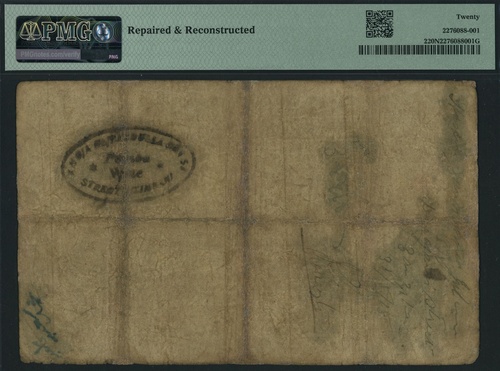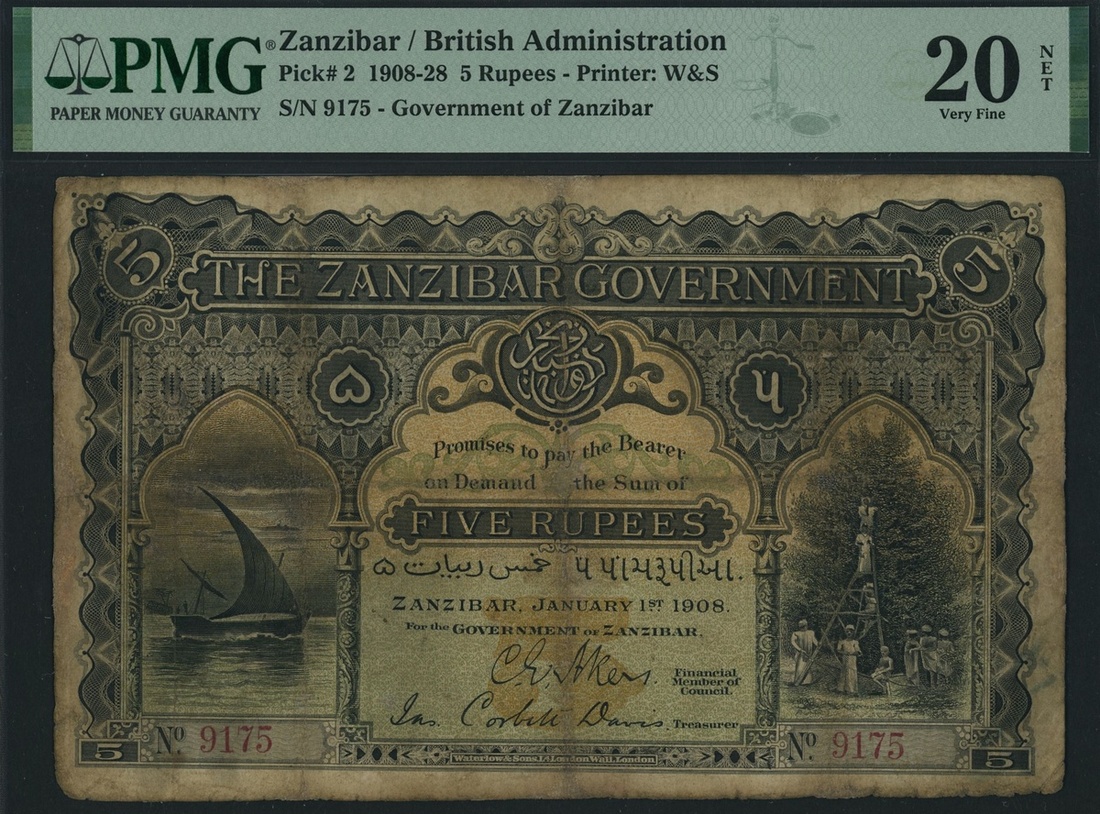Auction: 25008 - World Banknotes
Lot: 496
(x) The Zanzibar Government, 5 Rupees, 1st January 1908, red serial number 9175,
At the turn of the 20th century, Zanzibar was a land of vibrant contrasts, where the echoes of a long and complex history intertwined with the pulse of modernity. The island, a jewel in the Indian Ocean, had long been a crossroads of trade, where merchants from Arabia, Persia, India, and Africa converged in pursuit of spices, ivory, and gold. By the early 1900s, Zanzibar had transitioned from the seat of an Omani sultanate to a British protectorate, but it remained a thriving commercial hub, steeped in the traditions of its past. Life in Zanzibar at this time was dictated by the rhythms of the sea and the monsoon winds that brought the dhows laden with goods. The narrow, winding streets of Stone Town were alive with the chatter of traders negotiating in Swahili, Arabic, and Gujarati, while the scent of cloves, nutmeg, and cinnamon lingered in the air. Spices had been the island's lifeblood for centuries, earning it the moniker "The Spice Island." Clove plantations stretched across the countryside, their harvests fuelling a global trade network that brought prosperity to Zanzibar's elite and toil to its labourers. The economy of Zanzibar in the early 20th century remained deeply rooted in agriculture and commerce. Besides spices, the island's ports bustled with the export of copra (dried coconut), rubber, and mangrove poles, essential for construction in the Arabian Peninsula. Indian and Arab merchant families, many of whom had been established in Zanzibar for generations, controlled much of the trade, their grand merchant houses standing as testaments to their wealth and influence. The local Swahili population, skilled in seafaring and craftsmanship, played a crucial role in sustaining the maritime economy. Despite British oversight, the sultan still held authority, and his court remained an important centre of power, its ceremonies and traditions reflecting the fusion of African, Arab, and Persian influences. The issuance of banknotes in Zanzibar was a significant development that reflected the island's evolving economic landscape. Before the introduction of paper money, transactions were largely conducted using the Maria Theresa thaler, Indian rupees, and a variety of gold and silver coins from across the world. However, as trade expanded and financial institutions sought greater stability, the need for a standardised currency became evident. In 1908, the government of Zanzibar issued its first series of banknotes, denominated in rupees, to facilitate commerce and reduce reliance on foreign currencies. These notes, bearing intricate designs and inscriptions in English, Arabic, and Gujarati, underscored the multicultural fabric of Zanzibar's trading community. They were issued by the government rather than a private bank, a rarity in colonial Africa, reflecting Zanzibar's unique financial position. Yet, despite the elegance of these banknotes and the economic advancements they symbolised, Zanzibar remained a land of contrasts. Wealth coexisted with poverty, and modernization with tradition. The dawn of the 20th century saw the gradual decline of the slave trade, officially abolished in the late 19th century but still lingering in clandestine forms. Social stratification persisted, with the Arab ruling elite, Indian merchant class, and Swahili population navigating a delicate balance of power and influence under British rule. Through it all, Zanzibar remained a place of undeniable charm-where the call to prayer from the mosques blended with the sounds of the bustling marketplace, where the scent of cloves filled the air, and where the ocean carried stories from distant lands. The island stood at the crossroads of history, forever shaped by the ebb and flow of commerce, culture, and the ceaseless tides of the Indian Ocean.
(Pick 2, BNB B102a), in PMG holder 20 NET, repaired, reconstructed, very rare and even more so in a presentable grade a classic rarity
Subject to 5% tax on Hammer Price in addition to 20% VAT on Buyer’s Premium.
Estimate
£14,000 to £22,000
Starting price
£11000







